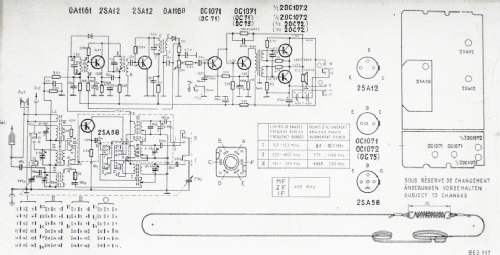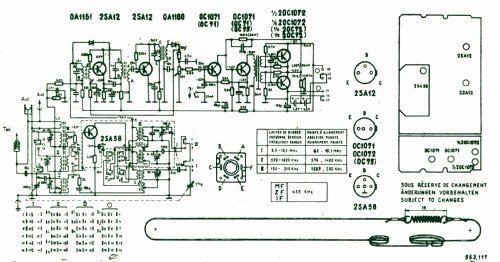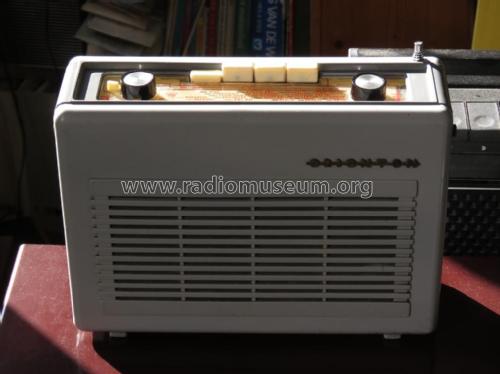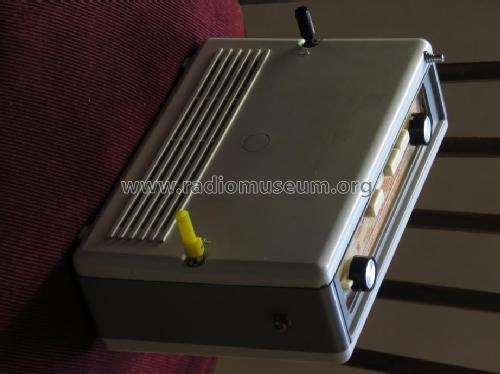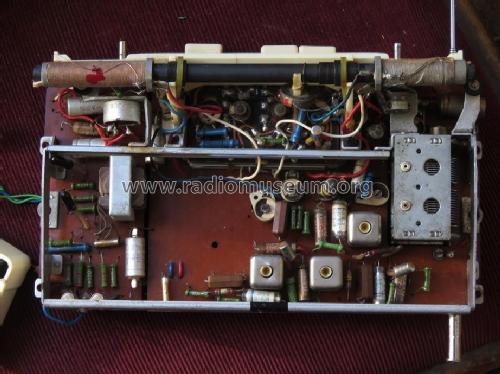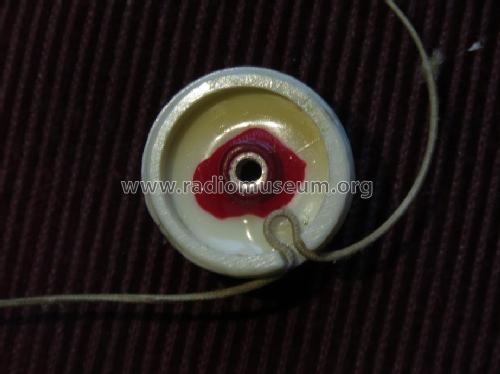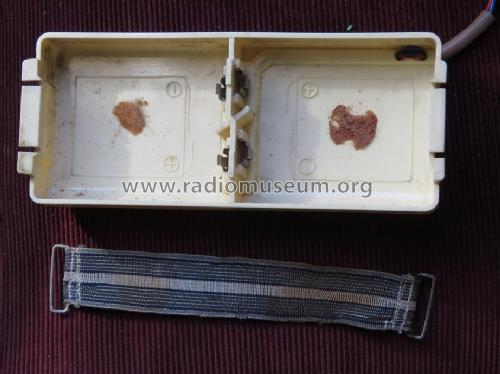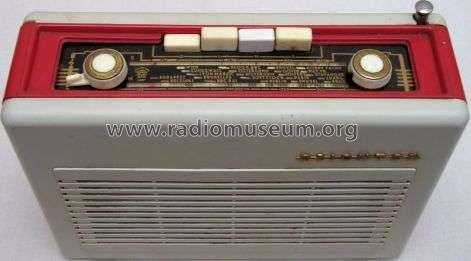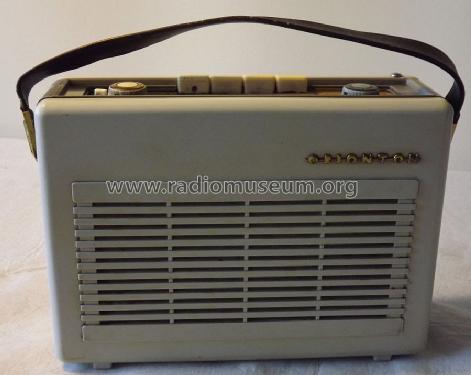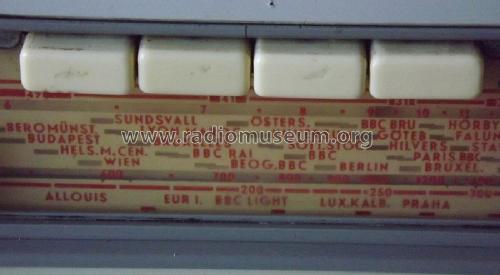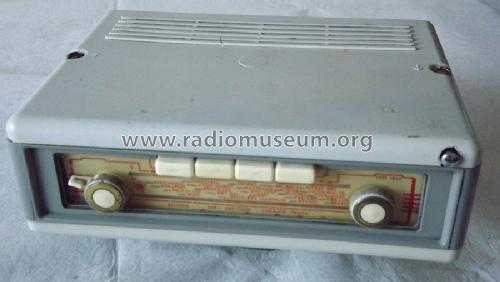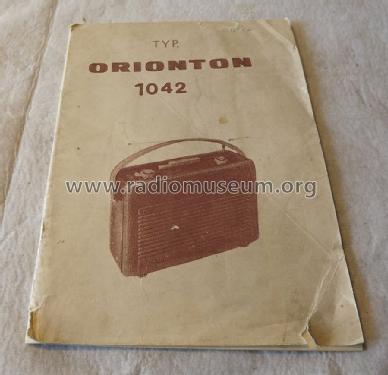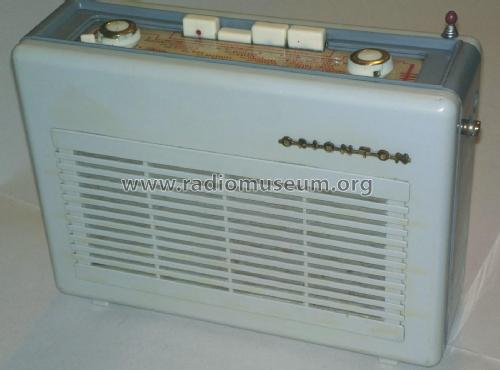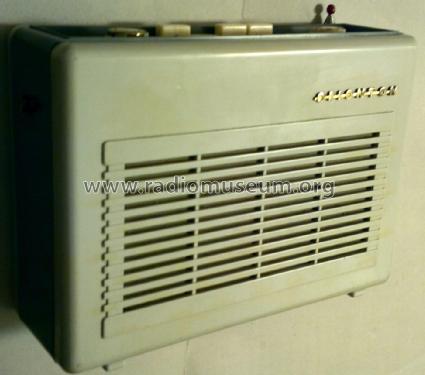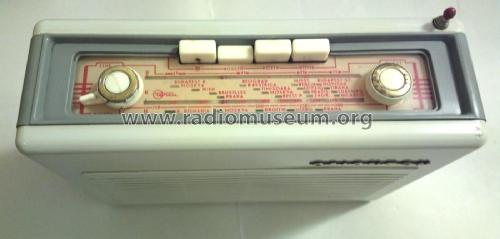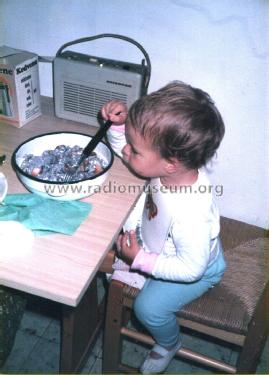Orionton T1042
Telefongyar, Terta (TRT, Export = Orion); Budapest
- Paese
- Hongrie
- Produttore / Marca
- Telefongyar, Terta (TRT, Export = Orion); Budapest
- Anno
- 1961
- Categoria
- Radio (o sintonizzatore del dopoguerra WW2)
- Radiomuseum.org ID
- 73706
-
- Brand: Terta, TRT
Clicca sulla miniatura dello schema per richiederlo come documento gratuito.
- Numero di transistor
- 7
- Semiconduttori
- 2SA58 2SA12 2SA12 OC71 or. OC1071 OC75 or. OC1071 OC72 or. OC1072 OC72 or. OC1072 OA1161 OA1160
- Principio generale
- Supereterodina (in generale); ZF/IF 455 kHz; 3 Stadi BF
- N. di circuiti accordati
- 5 Circuiti Mod. Amp. (AM)
- Gamme d'onda
- Onde medie (OM), lunghe (OL) e corte (OC).
- Tensioni di funzionamento
- Batterie (di accumulatori e/o a secco) / 2x4.5 Volt
- Altoparlante
- AP magnetodinamico ellittico (magnete permanente e bobina mobile).
- Potenza d'uscita
- 0.3 W (qualità ignota)
- Materiali
- Plastica (non bachelite o catalina)
- Radiomuseum.org
- Modello: Orionton T1042 - Telefongyar, Terta TRT, Export
- Forma
- Apparecchio portatile > 20 cm (senza la necessità di una rete)
- Dimensioni (LxAxP)
- 250 x 180 x 85 mm / 9.8 x 7.1 x 3.3 inch
- Annotazioni
-
Orion Orionton 1042 resp. Terta T1042.
Tone control, connector for external antenna. There are additional connectors for antenna and ground located in the screws that secure the lid.
Compare with Orionton 1042a.
- Peso netto
- 2 kg / 4 lb 6.5 oz (4.405 lb)
- Prezzo nel primo anno
- 1,800.00 HUF
- Fonte dei dati
- Radio es Televizio Vevö Keszülekek, 1960-63
- Autore
- Modello inviato da Felix Schaffhauser. Utilizzare "Proponi modifica" per inviare ulteriori dati.
- Altri modelli
-
In questo link sono elencati 219 modelli, di cui 204 con immagini e 55 con schemi.
Elenco delle radio e altri apparecchi della Telefongyar, Terta (TRT, Export = Orion); Budapest
Collezioni
Il modello Orionton fa parte delle collezioni dei seguenti membri.
Discussioni nel forum su questo modello: Telefongyar, Terta: Orionton T1042
Argomenti: 1 | Articoli: 1
Wenn man sich nachher die Liste der Mängel ansieht, fragt man sich, warum man je mit dem Aufpäppeln des Patienten begonnen ist.
- Abstimmachse fest
- Drehkondensator fest
- Drehkondensator-Platten verbogen
- Seilzug kaputt
- Zeiger beschädigt
- Skalenplatte Aufdruck stark beschädigt
- LW Spule ab
- Lose Spule seitlich am Ferritstab, ein Draht ab
- Halterung der Ferrit-Antenne auf einer Seite abgebrochen
- Lautes Krachen und Rauschen
- KW ohne Empfang?
- Kleines Abschirmblech lose
- Teleskop-Antennenkopf ab, oberstes Glied eingeschoben
- Falsche Knöpfe
Am Schluss fragt man sich nicht mehr: Das Gerät läuft, auf Langwelle, Mittelwelle und Kurzwelle! Der Klang ist zwar etwas ‚verwischt‘, kein Wunder, bei all den alten Kondensatoren. Optisch ist das Radio ganz nett. Doch dann die Abstimmung: Sie ist eine reine Freude! - Leicht und präzise geht sie; der Zeiger läuft elegant mit, und er weist mir wieder die Sender an aus aller Welt!
Bruce Cohen, 21.Apr.20
